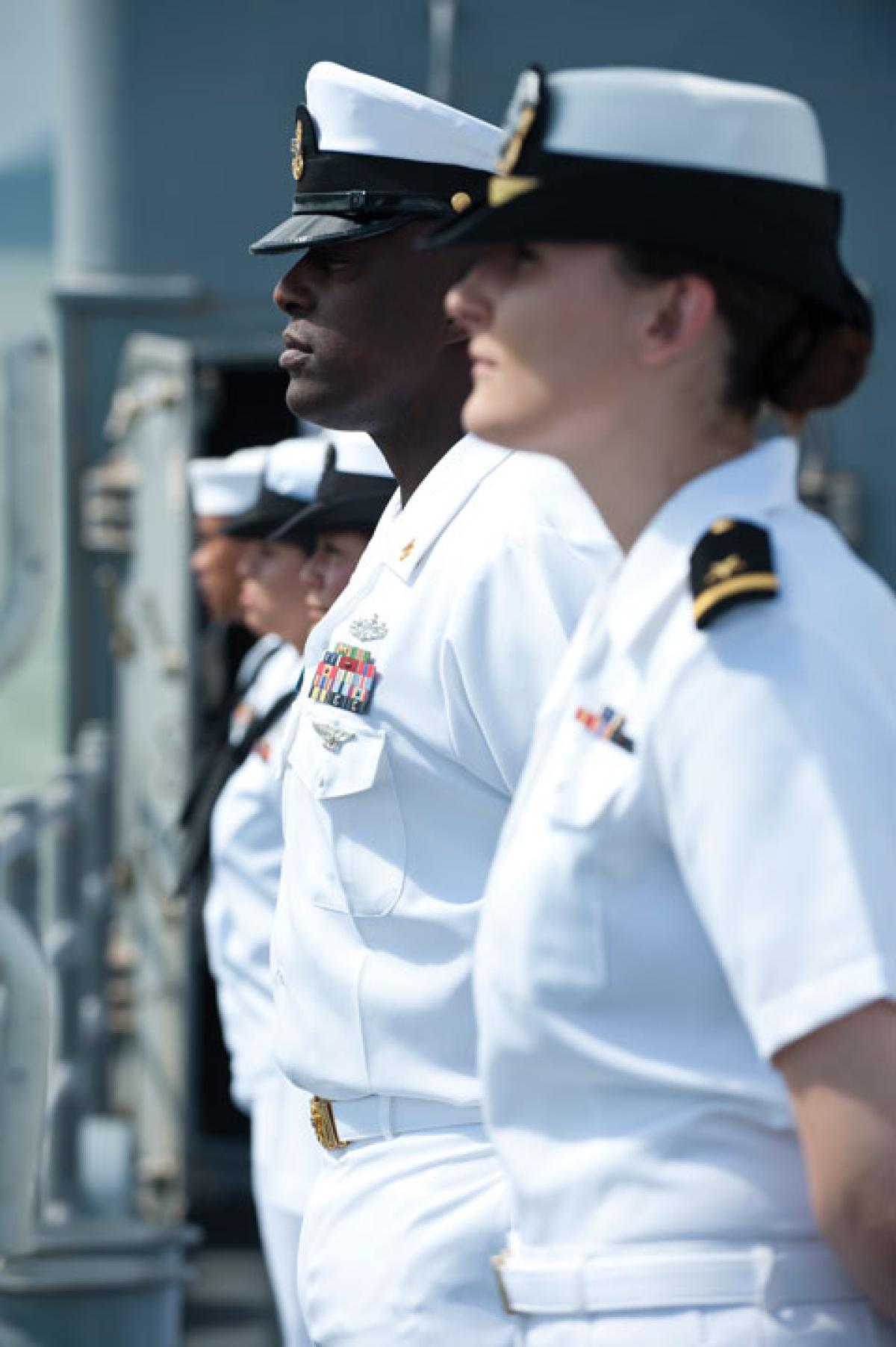Articles about “unmanned” and “autonomous” weapon systems are becoming ever more prevalent in the pages of Proceedings, as are references to the Navy’s so-called “unmanned future.” Although the potential for technological advancements to improve the efficacy of naval combat units should certainly be analyzed in detail, it’s somewhat alarming to observe the growing number of articles that blindly advocate for radical force-structure changes based on the purely speculative and incomplete capabilities of notional unmanned weapon systems. Even more concerning is the diminished importance ascribed to the Navy’s sailors in these techno-futurist fantasies, many of which barely even mention personnel at all. There also appears to be a relative lack of interest in the Navy’s future personnel-investment strategies and priorities, which are not examined at a comparable rate or depth.
In light of these observations, it may be beneficial to offer a gentle reminder of an inarguable truth: The Navy of the future will be manned. Warfare is an inherently human activity, and people will continue to play the central role in our nation’s future battles—both from the rear echelons and on the front lines.
The experiences of the last decade have indicated that success in modern conflicts is actually becoming increasingly dependent on the human element in many ways. Even with the introduction of new drones and weapons into the Navy’s arsenal during the next several decades, these systems will still all be developed, deployed, controlled, and maintained by people. The effectiveness of future weapon systems, regardless of their specific features, will be based on human decisions of how, when, and where to operate them. In the future Navy, machines will not be the entities developing tactics, perfecting operational art, or writing strategic plans. Above all, our credibility and our effectiveness as a naval force will continue to rely on the intelligence, professionalism, courage, and overall quality of our people.
This point is especially worth reinforcing in light of the budgetary constraints that the Navy currently finds itself operating within, and that it will continue to confront for the immediate future. Unfortunately, many of the programs that the Department of Defense seems most at ease with cutting, even today, are the very programs designed to attract, develop, and retain high-quality personnel. As evidenced by tuition assistance suspensions, recruiting program reductions, and science, technology, engineering, and mathematics (STEM) education cuts, people-focused efforts have been hit hard within the Navy and DOD this year.
It is impossible to determine exactly how many high-quality individuals won’t join the Navy because they never had the opportunities to witness the awe-inspiring precision of a Blue Angels demonstration or interact with personnel at a now-cancelled air show or Fleet Week event. It is similarly impractical to determine the number of students who ultimately won’t pursue a STEM-related college education or career supporting national security because they never had the chance to complete a Starbase STEM curriculum, a DOD program that offers experiential learning at military bases near participating middle and elementary schools. Nonetheless, there should be no doubt that cuts like these have the potential to negatively affect the Navy just as significantly as a comparable financial reduction to a hardware investment program. The Blue Angels 2013 season would have cost $20 million to complete, and the Starbase program costs $24 million per year. The Fiscal Year 2014 DOD weapons acquisitions budget request is $168 billion—nearly 4,000 times the combined budgets of the Blue Angels and Starbase. Programs like these are not unnecessary luxuries; they are investments in the Navy’s future human capital, and relatively cheap ones at that.
To be fair, it has not been all bad news for personnel-focused initiatives within the Navy lately. The successful reintroduction of Naval ROTC units to multiple Ivy League campuses after four decades of absence will bring more of the nation’s best and brightest into leadership positions within the Navy and Marine Corps. Additionally, Navy leadership has taken a strong public position about protecting funding for sailors’ tuition-assistance programs.
However, this year’s budget-reduction experience, overall, has been concerning. Many well-established personnel investment programs were among the first to be targeted for cuts with seemingly little regard for their virtues. As pressure to reduce spending continues in the years ahead, the Navy must ensure it adequately prioritizes investments in personnel alongside its investments in weapons. In the future, as in the last 238 years, it will be the Navy’s people—not its machines—who ultimately determine the difference between victory and defeat.



